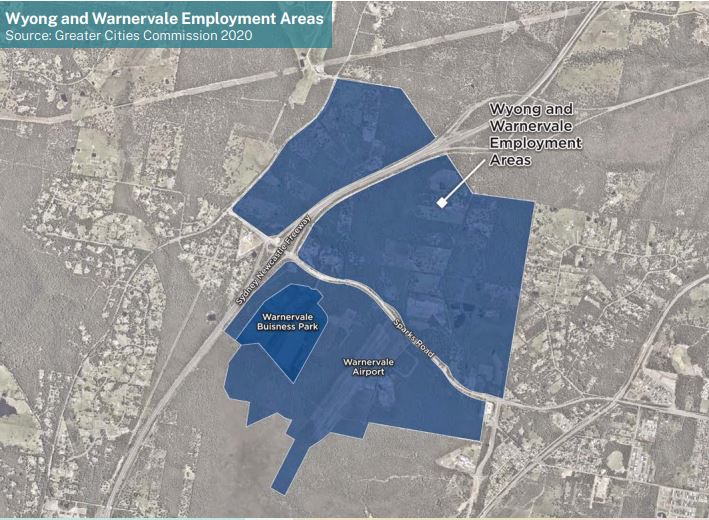More than $23M is being invested by the NSW Government to unlock housing, jobs and opportunities with seven key priorities set out in the Central Coast Strategy for Economic Growth released on Monday.
The Strategy identifies priorities for driving innovation and economic growth by supporting the thriving food production ecosystem, unlocking employment lands, building on health and education precincts including a Gosford university campus, improving transport within the region and connections with Sydney and Newcastle, delivering a high-speed internet network and improving planning processes to accelerate development approval.
Minister for Infrastructure, Cities and Active Transport, Rob Stokes, said there was a particular focus on unlocking key employment sites for business growth and job opportunities.
“With commitments for faster rail at Wyong and a new university campus at Gosford, we’re backing the Central Coast to grow a stronger economy, invest in better services and make lives easier for local families,” he said.
Also this week, the Government released its Draft Central Coast Regional Transport Plan which is open for public feedback until Friday, February 24 online at – https://www.future.transport.nsw.gov.au/future-transport-plans/draft-central-coast-regional-transport-plan
The Draft Transport Plan contains 80 initiatives including an upgraded interchange on the M1 at Ourimbah, the Pacific Highway upgrade through Wyong Town Centre and more connected neighbourhoods.
Parliamentary Secretary for Central Coast, Adam Crouch, said the community’s feedback would continue to be critical.
“We’re already in the process of delivering some of these projects including an upgrade to the Pacific Highway at Lisarow, accessibility improvements to Tuggerah Station and changes to the intersection of Ocean Beach Rd and Rawson Rd at Woy Woy,” he said.
Central Coast Council Administrator, Rik Hart, said the Economic Strategy and Draft Transport Plan aligned with Council’s own strategies for future growth with a focus on housing, jobs and tourism.
“Diverse housing offerings, fast reliable connected transport options, investment in education and health and innovative business and tourism will all help accelerate the economic growth of the Central Coast,” he said.
“Council, in its work to date on a revitalised Gosford waterfront, is in lock-step with the government in recognising the potential of this region and what is needed.
“Our support of the new university and TAFE, as well as our implementation of the Central Coast Economic Development Strategy and Affordable and Alternative Housing Strategy, are all pivotal in the overall economic growth of the Central Coast.
“Council has worked closely with the Greater Cities Commission, NSW government agencies and key stakeholders to ensure that the government’s Central Coast Economic Strategy captures the opportunities and areas which will have the most impact on the region,” Hart said.
The Central Coast Chapter of the Urban Development Institute of Australia (UDIA) is pleased the Strategy recognises the urgent need to unlock employment lands and accelerate employment precincts.
UDIA says its members are reporting unprecedented demand for employment land and new housing in the region, and the actions outlined in the Strategy are needed now to seize the current opportunities and deliver more jobs for more Central Coast residents.
“The increased focus on investment in key employment areas outlined in the Central Coast Strategy is critical, including the land in the Northern Growth Corridor around the Central Coast Airport and Wyong; sites within the Southern Growth Corridor at Somersby and Mount Penang; and the Munmorah Power Station site,” said Caine King, Chair of the UDIA Central Coast Chapter.
“Three keys to the success of the Strategy will be improving planning processes to speed up assessments, delivering enabling infrastructure, and completing the Central Coast Strategic Conservation Plan (Biocertification) for these employment areas.
“Focusing on these three vital elements will provide the certainty industry needs to deliver the Coast’s economic growth and achieve good outcomes, both for jobs and biodiversity.
“(In relation to the Draft Transport Plan) UDIA has done the work to show government where it could get the best bang for its buck in delivering the transport and other enabling infrastructure needed to unlock economic growth on the Central Coast.
“Our Central Coast Building Blocks report shows where infrastructure investments will deliver the most jobs.
“The question remains whether the NSW Government will support land to be fully utilised for its zoned purpose, and appropriately balance the land’s environmental, economic and social benefits for the Central Coast, by committing meaningful funding to deliver infrastructure and Biocertification for our employment lands.”
The Central Coast Strategy for Economic Growth was informed by community consultation beginning in 2020 and can be viewed at https://greatercities.au/innovation-districts/districts
Its delivery will be further supported by the Six Cities Region Plan, to be developed during 2023.
Sue Murray




